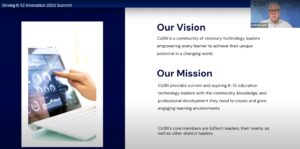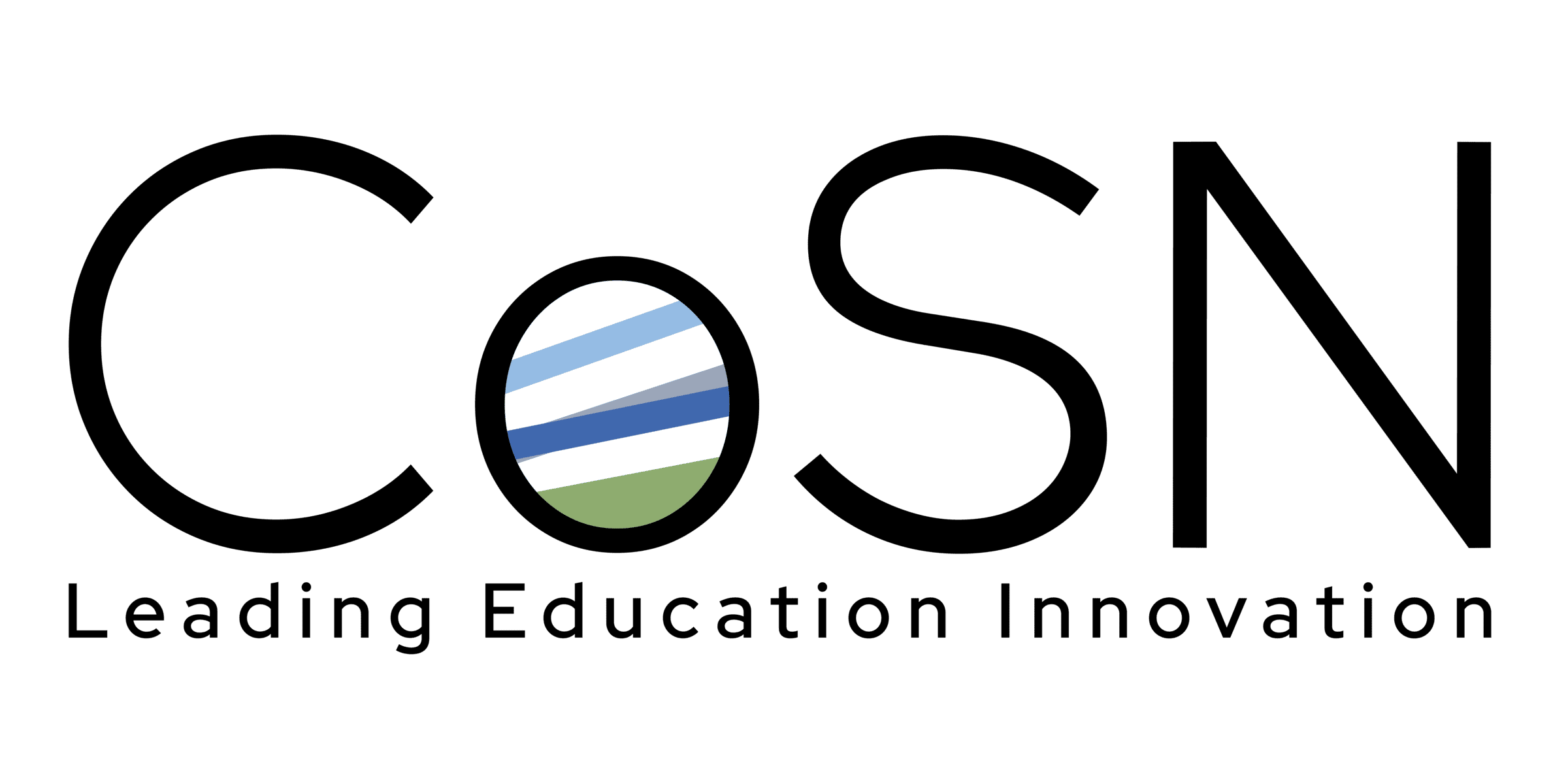Many K-12 schools and districts face the dual challenge of Attracting and Retaining Educators and IT Professionals while Building the Human Capacity of Leaders–this is why both topics were voted into CoSN’s 2025 Driving K-12 Innovation Report by the initiative’s 2025 Advisory Board.

Driving K12 Innovation Summit 2025
With technological advancements driving innovation and educational paradigms shifting to meet students’ (and educators’) needs, the demand for a strategic, human-centric approach has never been greater.
During the 2025 Driving K-12 Innovation Summit in February, members of CoSN’s EdTech Innovation Committee joined as special guests to address the intersection of these two important topics (Attracting and Retaining Educators and IT Professionals while Building the Human Capacity of Leaders), and the conversation continued at the committee’s meeting last month.
“Of all the issues facing public education today that we can’t control, the quality of our leaders is the single biggest thing we can control that’ll have a positive impact on teachers and students,” said Committee Co-Chair Emily Marshall (Pima Community College, Arizona).
This post highlights just some of the committee’s deep discussion, exploring strategies and frameworks to create a resilient and forward-thinking workforce.
Build a Strong Culture that Attracts Top Talent
Stacy Hawthorne (Learn 21, Ohio) shared that there are many positive effects of Building the Capacity of Leaders, including a healthy school culture and never having a teacher shortage. When she worked at Davidson Academy, a public online school for gifted students, they built a strong culture and reputation for cultivating leaders that attracted the eyes of fellow educators.
“When we would go to conferences and present, people would start following us to learn more about what it was like to work at [Davidson]. We had little business cards made up that said, ‘Here’s our core values. And if you want to work with us, here’s a QR code. When we grew enough that we had a new position open, I always had a whole group of resumes of people that we met at conferences or different places, and that was where I went to first,” said Hawthorne. She added that when she was ready to move on from her position as Director, they didn’t have to do a job search because they had already developed a staff member to take over. “She was ready, and she’s taken over and done an amazing job,” Hawthorne added.

Strategies for Cultivating Leadership
Co-Chair David Jarboe (D2 Harrison Schools, Colorado) shared that it’s important for districts to have a framework to work with when retaining staff. While there are many models available, Jarboe recommended the Technological Pedagogical Content Knowledge (TPACK) framework, which balances technological knowledge, pedagogical knowledge, and content knowledge. “I think, when you’re balancing those three, you’re building that capacity,” said Jarboe. “Because if you just concentrate on one, you’re going to be out of balance—we see that in the classroom.”
Maintain Culture When Leadership & Circumstances Change
Pete Just, CETL (Just Strategics, Indiana) added that the sustainability of leadership and culture is key to successful implementation. “It all rises and falls based upon continuity, that’s the real trick – to build sustainability into the culture, because you can have a great situation that all of a sudden goes away because someone retires or circumstances change,” Just said. “COVID created a bunch of difficult situations that changed personnel and also changed mindsets and changed the culture within. Culture doesn’t change very fast unless it’s going downhill…then it can change real fast. It’s hard to build culture, and it’s hard to maintain it.”
To make sure that cultures don’t transform for the worse with new leadership, Ruben Puentedura (Hippasus, Massachusetts) recommends engaging in an action researcher mindset. “There’s something very deep and intertwined here in terms of the type of thing you need to be doing both at the teacher level, also at the principal, also at the superintendent level,” Puentedura said. “Have all tiers of the structure effectively become action researchers. No matter what level you are at, you don’t have people who are just told, ‘well, go in here, have a book, and here is the way in which you teach the book,’ and that’s it. A) If you want to talk about attracting and retaining and retaining people, the best people are not going to stick around long for that. And B) You don’t adapt to the needs as things change. The most flexible environments I saw during COVID were the ones that have been working in an action research mode.”
Doug Couture (South Windsor Public Schools, Connecticut) emphasized that creating a strong culture requires a shared vision. “You have to have a vision first because that’s what attracts people to certain districts,” he explained. “What draws others to our school system is having a clear, well-defined vision. We developed a 10-year plan with a consistent message that never wavered in our communications. As a result, we are attracting staff and families, making us one of the few districts in Connecticut experiencing population growth.”
Empower Teachers with Agency & Responsibility
CoSN’s Jill Brown shared that when she was an educator, her goal was always to have other teachers leading professional development opportunities, giving the students “learner agency” and showcasing their expertise. John Heffernan ( Professional Learning & Development Coordinator, Ireland), shared his unique experience as an Irishman who has taught previously in Virginia, saying that another way for educators to take initiative in their work is by taking on a leadership role. “One of the things I found really interesting in the U.S. education system in Virginia is that there’s far more roles for leadership for teachers and schools; you could become a coach, you could become an AP teacher, a principal. There’s a lot more opportunity,” said Heffernan. “In Ireland, there are fewer positions on the ladder to get into. So, you find some great teachers who could be great leaders but they just don’t get the right conditions to take up that leadership role.” He added that we train teachers to be leaders of a classroom, but not so many to be leaders of other teachers.
By championing continuous learning and embracing a culture of inclusion and adaptability, schools and districts can transform challenges into opportunities for lasting impact. Now is the time to reassess your approach, consider these strategies, and commit to a vision that not only meets today’s demands but also lays a solid foundation for tomorrow’s leaders.
AUTHOR: Stephanie King, Writer and Communications Manager,
CoSN’s EdTech Innovations Committee and Driving K-12 Innovation
Published on: March 10, 2025
CoSN is vendor neutral and does not endorse products or services. Any mention of a specific solution is for contextual purposes.



